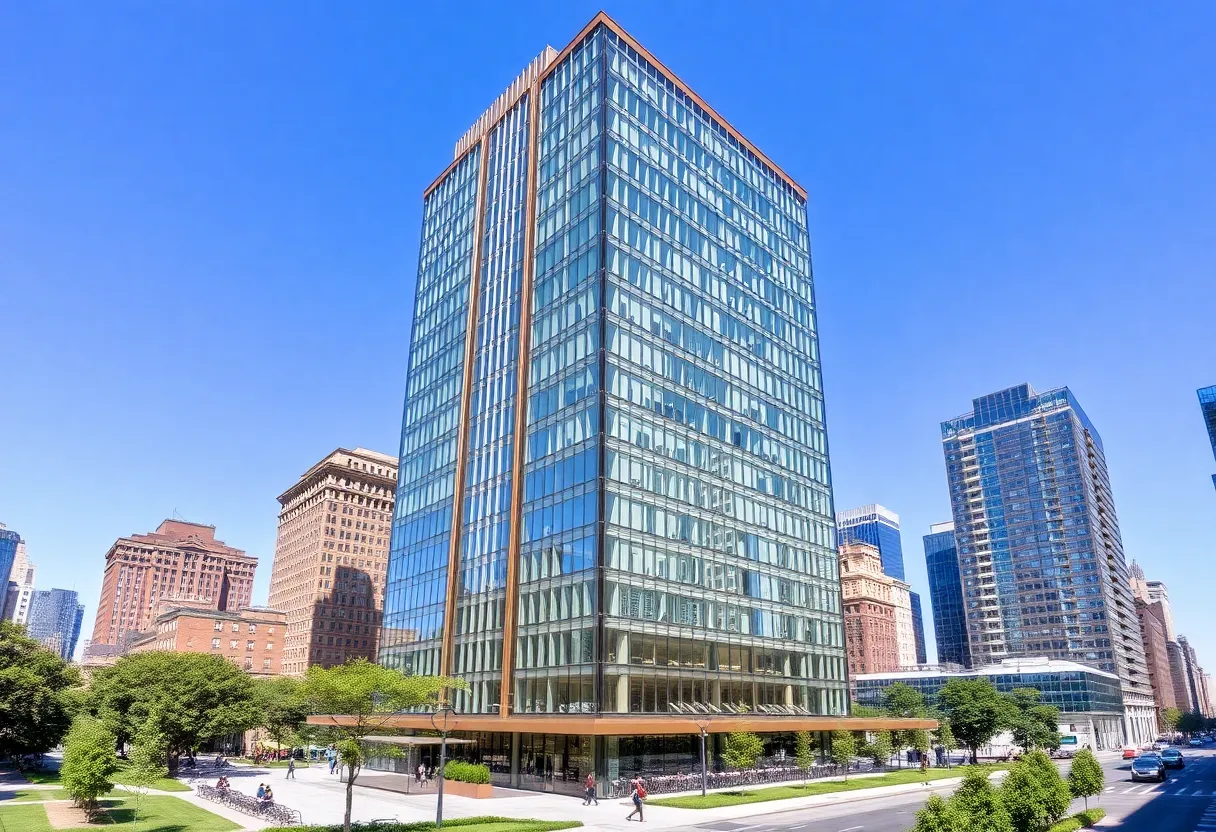Why Construction ERP is Essential for New York Businesses: Boosting Efficiencies, Cutting Costs, and Leveraging Open APIs
New York City’s construction sector is a $61.4 billion engine in 2024, according to the New York Building Congress. With more than 6,400 active construction sites, firms must navigate strict regulations, unionized labor, climate challenges, and carbon compliance mandates like Local Law 97. Construction Enterprise Resource Planning (ERP) software enables contractors to consolidate financials, job costing, compliance, and field operations under one digital roof.
ERP systems with open API architecture are transforming how firms operate—by connecting scheduling tools, IoT devices, carbon monitors, and New York City’s DOB compliance platforms. With 78% of NYC contractors reporting labor shortages and delays, ERP software is not just a back-office tool—it’s a survival strategy for urban construction success.
The Critical Role of Construction ERP in New York’s Construction Landscape
From Local Law 196 safety training compliance to prevailing wage enforcement, the construction environment in NYC is one of the most regulated in the U.S. Traditional project management software fails to keep up. ERP platforms like CMiC and Procore centralize all workflows—from estimating and union payroll to lien waivers and permit tracking.
New York’s DOB NOW system for filing and compliance is a key integration point. With open API support, ERP systems can pull real-time permit status, inspection updates, and automatically generate compliance reports, helping firms stay ahead of violations and avoid costly stop-work orders.
Driving Operational Efficiencies in New York’s High-Stakes Projects
Delays cost New York developers more than $100,000 per day on large-scale projects. With ERP systems automating RFIs, change orders, and payment workflows, field and office teams collaborate in real time via mobile devices. On high-traffic projects like East Side Access or Hudson Yards, even a 5% boost in efficiency can save millions.
At LaGuardia Airport’s Terminal B, Walsh Group used Procore’s open API to integrate with Primavera P6 and BIM 360, reducing field-report lag time by 70%. These types of connected systems reduce rework, improve forecasting, and keep multi-phase NYC builds on track—even in winter weather.
Achieving Cost Savings Amid New York’s High Expenses
With labor costs up 6.5% year-over-year and material prices rising, cost control is mission-critical. ERP systems track actuals vs. estimates across multiple cost codes. Procurement modules source material across vendors in real time, improving negotiation leverage and just-in-time delivery logistics across the boroughs.
NetSuite and Acumatica users in NYC have reported savings of 8-12% on MEP packages by consolidating bid data and automatically routing PO approvals. Combined with real-time cash flow analytics, ERP software helps avoid financing gaps that delay subcontractor payments and damage supplier relationships.
Aligning with NYC Sustainability Mandates
Local Law 97 imposes strict emissions caps starting in 2024, and fines can reach $268 per ton of CO₂ emitted above the threshold. Construction ERPs with open API integrations—such as those to Carbon Lighthouse, Measurabl, and energy meters—allow buildings to monitor usage in real time, align with green-retrofit strategies, and document compliance with DOB filing requirements.
The Pivotal Role of Open APIs in New York Construction ERP
According to Postman’s 2024 State of the API report, 69% of companies say open APIs are critical to product success. In construction, this translates to syncing ERP with scheduling apps like Primavera, accounting platforms like QuickBooks or Sage Intacct, and smart equipment sensors for fleet tracking. Open APIs reduce manual data entry, accelerate updates, and power dashboards tailored for stakeholders—from project managers to CFOs to DOB inspectors.
Leading Construction ERP Software Companies with Open API Capabilities for New York
- CMiC Global: Offers robust REST APIs with a single-database model, used by Iovino Enterprises for union-certified payroll, OSHA tracking, and real-time cost forecasting on public infrastructure projects.
- Procore: Integrates with over 400 tools. Used by Turner Construction in NYC for document control, RFIs, and change management via API connectors to BIM 360 and Oracle Primavera.
- Oracle NetSuite: With SuiteTalk and REST-based APIs, NetSuite supports multi-entity job costing, custom approval workflows, and real-time integration with subcontractor billing portals.
- Acumatica: Known for flexibility and developer tools, Acumatica’s open APIs allow easy integration with e-signature apps, carbon-tracking platforms, and union compliance databases.
- Microsoft Dynamics 365 Business Central: With Power Platform integration, it enables drag-and-drop customizations, mobile dashboards, and tight integration with SharePoint and Teams—perfect for cross-departmental coordination.
Case Studies: ERP Success with Open APIs in New York
Case 1: The New York City School Construction Authority (SCA) implemented a CMiC-based ERP integrated with contractor certification systems and DOB compliance reporting. Result: 38% faster project closeout documentation and better oversight on subcontractor diversity goals.
Case 2: A Queens-based general contractor used Procore’s open API to automate RFI workflows with their design-build team on a $42 million public housing project. The integration with Autodesk Build reduced change order processing time by 45% and boosted subcontractor engagement.
Frequently Asked Questions (FAQ)
What makes Construction ERP critical for New York businesses?
Construction ERP integrates project management, financials, operations, and sustainability data, tackling New York’s high costs, strict regulations, and labor shortages with real-time monitoring and compliance tools tailored for urban complexity.
How does Construction ERP improve efficiencies in New York projects?
By automating procurement, scheduling, invoicing, and labor tracking, ERP systems can improve productivity by 25-30%, essential in a high-density environment like New York City where downtime and miscommunication are costly.
What cost savings can New York construction firms expect from ERP?
ERP software helps reduce waste, procurement overhead, and billing errors. In New York’s high-cost market, this leads to 5–10% margin improvements and faster project closeouts.
Why is an open API vital for Construction ERP in New York?
Open APIs allow integration with city-mandated tools like DOB NOW, IoT energy meters, and contractor CRM systems—crucial for meeting Local Law 97 compliance, safety audits, and real-time subcontractor coordination.
Which ERP software companies excel in offering open APIs for New York firms?
Top ERP vendors with strong open API ecosystems include CMiC Global, Procore, Oracle NetSuite, Acumatica, and Microsoft Dynamics 365 Business Central, all widely used in New York infrastructure and commercial projects.
How do open APIs enhance collaboration in New York construction projects?
Open APIs facilitate real-time data exchange between ERP systems and third-party tools such as BIM, inspection reporting, and carbon tracking, enabling seamless coordination in large-scale, multi-stakeholder New York projects.
How does Construction ERP help meet Local Law 97 sustainability targets?
By integrating smart meters and carbon monitoring tools through APIs, ERP systems help contractors and building owners track emissions, compare against LL97 thresholds, and automate mandatory reporting to the NYC DOB.
Key Considerations for Construction ERP in New York: A Summary Chart
| Key Consideration | Description | NY-Specific Benefits | Challenges |
|---|---|---|---|
| Efficiency Improvements | Automation and real-time dashboards | 25-30% productivity gains, faster permitting | Adoption resistance among field workers |
| Cost Savings | Smart procurement, error reduction | 5-10% margin gains, cash flow visibility | Upfront integration and training cost |
| Open API Integration | Connect with 3rd-party platforms | LL97, DOB NOW, BIM, accounting sync | Custom development may be needed |
| Data Management | Centralized and mobile-friendly | Better insights for risk and compliance | Data migration from legacy systems |
| Software Selection | ERP with construction-specific APIs | Tailored for NYC’s union and permit systems | Vendor evaluation and scalability fit |
| Sustainability Compliance | Emission tracking and reporting | LL97 avoidance of $268/ton CO₂ fines | Complex metering and reporting setup |
Author: STAFF HERE NEW YORK WRITER
The NEW YORK STAFF WRITER represents the experienced team at HERENewYork.com, your go-to source for actionable local news and information in New York, the five boroughs, and beyond. Specializing in "news you can use," we cover essential topics like product reviews for personal and business needs, local business directories, politics, real estate trends, neighborhood insights, and state news affecting the area—with deep expertise drawn from years of dedicated reporting and strong community input, including local press releases and business updates. We deliver top reporting on high-value events such as New York Fashion Week, Macy's Thanksgiving Day Parade, and Tribeca Film Festival. Our coverage extends to key organizations like the Greater New York Chamber of Commerce and United Way of New York, plus leading businesses in finance and media that power the local economy such as JPMorgan Chase, Goldman Sachs, and Bloomberg. As part of the broader HERE network, including HEREBuffalo.com, we provide comprehensive, credible insights into New York's dynamic landscape.





